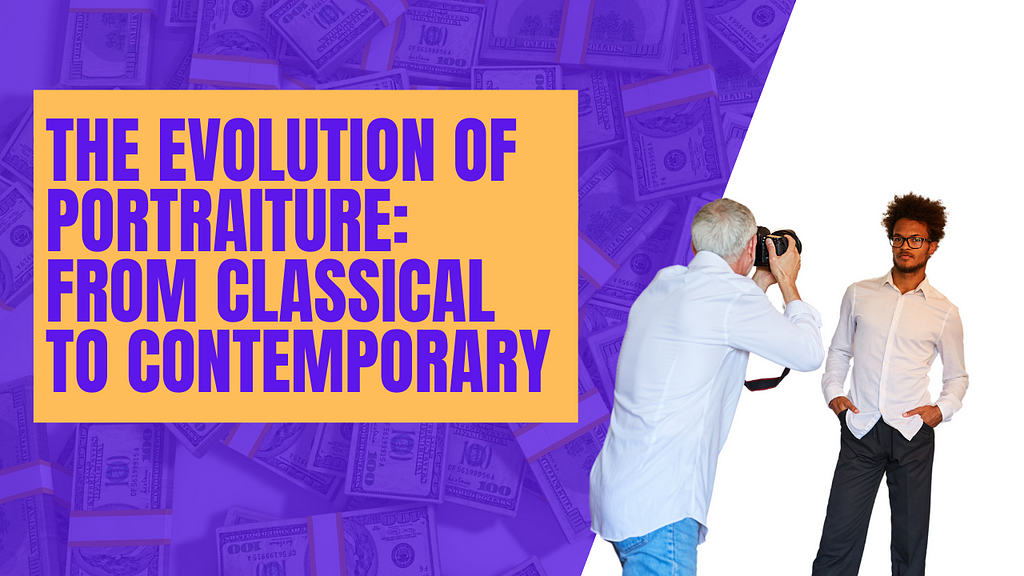
Portraiture, the art of capturing the essence and personality of an individual, has undergone a fascinating evolution over the centuries. From the classical masterpieces that adorned the walls of aristocratic homes to the avant-garde experiments of contemporary artists, portraiture has been a mirror reflecting the societal, cultural, and artistic changes of each era.
Classical Portraiture: A Glimpse into History: Classical portraiture has its roots in ancient civilizations, where rulers and elites commissioned artists to immortalize their likenesses. During the Renaissance, artists like Leonardo da Vinci and Raphael elevated portraiture to new heights, infusing their subjects with depth and emotion. One iconic example is da Vinci’s “Mona Lisa,” where the enigmatic smile and gaze have captivated viewers for centuries.
The Grandeur of Baroque and Rococo Portraits: As the Baroque and Rococo periods unfolded, portraiture became more theatrical and ornate. Peter Paul Rubens, a Baroque master, created majestic portraits that conveyed the power and opulence of his subjects. The Rococo style, on the other hand, emphasized elegance and charm, as seen in the works of Jean-Honoré Fragonard.
Romanticism and the Emotional Portrait: The Romantic era witnessed a shift towards expressing emotion and individualism in portraiture. Artists like Francisco Goya and Eugène Delacroix explored the inner psyche of their subjects. Goya’s haunting “The Third of May 1808” is a testament to the power of conveying raw emotion through portraiture.
Realism and Photography: A Changing Landscape: The advent of photography in the 19th century revolutionized portraiture. With the camera’s ability to capture reality with precision, artists like Gustave Courbet embraced realism. Photography, however, also led to the democratization of portraiture, allowing individuals from various social strata to have their images recorded.
Impressionism and the Capture of a Moment: In the late 19th century, Impressionist painters like Claude Monet and Edgar Degas challenged traditional notions of portraiture. Instead of rigid poses, they captured the fleeting moments of daily life. Degas’ “L’Absinthe” exemplifies this departure, depicting the weariness and isolation of urban existence.
Modernism and the Avant-Garde: The 20th century saw radical shifts in artistic movements, influencing portraiture. From the Cubist experiments of Pablo Picasso to the abstract portraits of Wassily Kandinsky, artists embraced new forms of expression. Portraits were deconstructed, fragmented, and reconstructed, reflecting the chaos of a rapidly changing world.
Contemporary Portraiture: Breaking Boundaries: In the 21st century, portraiture has become a dynamic and diverse field. Traditional techniques coexist with digital art, and artists like Chuck Close and Jenny Saville challenge conventional beauty standards. Contemporary portraiture is a reflection of our globalized, interconnected world, embracing diversity and pushing the boundaries of representation.
Digital Age and the Rise of Self-Portraiture: With the proliferation of smartphones and social media, self-portraiture has taken center stage. Platforms like Instagram have turned individuals into both the creators and subjects of their portraits. The selfie culture has given rise to a new form of self-expression and identity representation.
The evolution of portraiture is a rich tapestry woven with the threads of history, culture, and artistic innovation. From the regal portraits of the Renaissance to the fragmented faces of modernism and the diverse representations of today, portraiture continues to evolve, reflecting the ever-changing nature of human expression and identity. As we gaze upon the portraits of the past and present, we witness not only the faces of individuals but also the collective narrative of our shared human experience.
The Evolution of Portraiture: From Classical to Contemporary was originally published in Educartion on Medium, where people are continuing the conversation by highlighting and responding to this story.